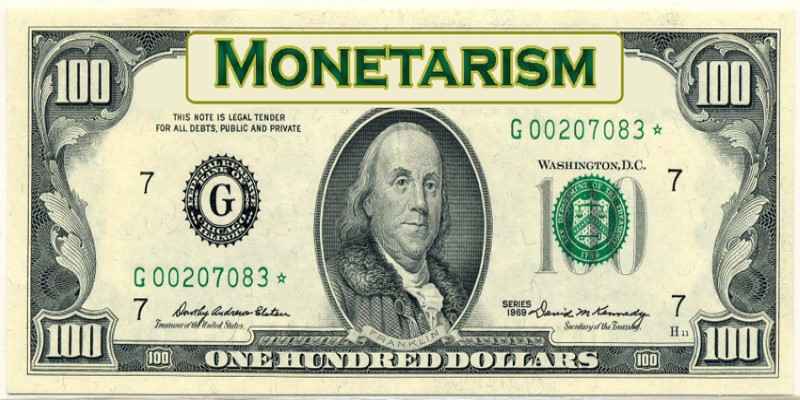Monetarism and Money Supply: Can Printing Money Control Inflation?
Monetarism is an idea that seems both engrossing and disputable in today's world, scrutinized for its effectiveness in economic strategies. It was first proposed by economist Milton Friedman; monetarism puts significant focus on the role government plays when managing a country's money supply to control inflation and stabilize the economy. So, how does this strategy work? Monetarism drags the reader into complicated mechanisms of money supply, insisting that it is the quantity of money existing in circulation within an economy that has the decisive impact on regulating inflation.

In this paper, we observe the moorings of monetarism, which outlines how money printing is used to stabilize inflation and looks into the benefits and risks of such practice.
What is Monetarism? The Principles of Money Supply and Control of Inflation
Monetarism is concerned with the amount of money and its relation to inflation. As an economic theory, perhaps most closely associated with Milton Friedman, it suggests that money supply is the prime source of inflation and the economic cycle. This means that, according to the monetarists, inflation would be directed and restricted by managing the money circulating within the economy. In theory, by manipulating this supply, it is possible for the central banks and the governments to direct economic growth, stabilize prices, and be in charge of the forces of inflationary and deflationary pressures.
Printing Money to Control Inflation: How Does It Work?
One of monetarism’s most intriguing aspects is its stance on “printing money.” At first glance, printing more money might seem counterintuitive as a way to control inflation, as it risks flooding the market with currency, thereby devaluing it. However, monetarism doesn’t propose unchecked money printing; rather, it advocates for a measured approach where money supply grows at a rate consistent with economic productivity. By carefully managing the amount of money printed, monetarists believe that governments can control inflation while also fostering economic stability.
Central banks play a pivotal role here. They can use monetary tools such as open market operations, discount rates, and reserve requirements to control the flow of money. For example, during periods of low economic growth or recession, a slight increase in money supply might encourage spending and investment, helping to stimulate economic recovery. Conversely, if inflation is on the rise, the money supply might be reduced to cool down spending.
This approach, however, requires accurate predictions about how much money the economy needs at any given time. If done correctly, printing money becomes a tool for fine-tuning economic activity, aligning it with actual growth potential. When mismanaged, however, it can result in hyperinflation, economic instability, and loss of public trust. Monetarism argues that a steady, predictable increase in money supply is ideal, avoiding erratic fluctuations that could destabilize the economy.
The Benefits and Criticisms of Monetarism

Monetarism offers a structured approach to managing inflation, making it an appealing strategy in certain economic contexts. One of its primary advantages is the predictability it introduces into monetary policy. By advocating for a controlled, steady increase in money supply, monetarism seeks to avoid drastic swings in economic activity. This consistency can reduce the uncertainty that businesses and consumers face, fostering a stable environment for investment and growth. In times of economic crisis, monetarism provides a blueprint for intervention, guiding central banks to either increase or restrict the money supply to stabilize the economy.
However, monetarism is not without its critics. Many economists argue that its emphasis on money supply ignores other vital factors influencing inflation, such as supply chain disruptions, geopolitical conflicts, and natural disasters. These external factors can also drive up prices, creating inflation independently of the money supply. Critics also contend that monetarism's focus on long-term goals may fail to address immediate economic needs, especially in times of sudden economic crisis. For instance, during a global pandemic or financial meltdown, the slow, calculated approach of monetarism might lack the responsiveness required to address sharp drops in consumer confidence or employment rates.
Moreover, monetarism assumes that individuals and businesses will respond predictably to changes in money supply. In reality, consumer and investor behavior is influenced by myriad factors, including psychology, social trends, and global market dynamics. As such, the simplistic assumption that inflation can be managed by controlling the money supply alone may not always hold. These limitations highlight the importance of a balanced, adaptable approach to monetary policy that can respond to various economic pressures.
Monetarism in Practice: Historical Examples and Lessons Learned

Throughout history, various governments and central banks have tested monetarist policies with mixed results. One of the most notable examples is the United States under Federal Reserve Chairman Paul Volcker in the early 1980s. Facing double-digit inflation, Volcker implemented a monetarist-inspired approach, drastically reducing the money supply to curb inflation. This decision, although controversial, ultimately succeeded in bringing down inflation, albeit at the cost of a severe recession in the short term. This episode demonstrated both the power and risks of monetarism—while effective, it can come with significant economic sacrifices.
Similarly, Japan’s experience in the 1990s highlighted the limitations of a strict monetarist approach. In an attempt to stimulate growth, the Bank of Japan increased money supply during a period of low inflation. However, this strategy failed to boost economic growth and led Japan into a period of deflation and stagnation known as the “Lost Decade.” The lesson here is that monetarism is not a one-size-fits-all solution; its effectiveness depends on the economic environment and how well policymakers can anticipate and react to external pressures.
These cases underscore the delicate balance required when applying monetarist policies. While they offer a potential framework for managing inflation, they also reveal that monetarism alone may not be sufficient in addressing the complex needs of modern economies. Combining it with other economic tools and policies is often essential for achieving sustained growth and stability.
Conclusion
Monetarism, with its focus on regulating the money supply to control inflation, presents a compelling yet complex approach to economic stability. The theory's reliance on measured increases in the money supply underscores the delicate balancing act needed to prevent inflation while fostering growth. By advocating for a controlled, consistent approach to money supply management, monetarism offers an appealing framework for maintaining price stability. However, as seen in real-world examples, the success of this approach depends on accurately gauging economic conditions and balancing them with other monetary tools.












